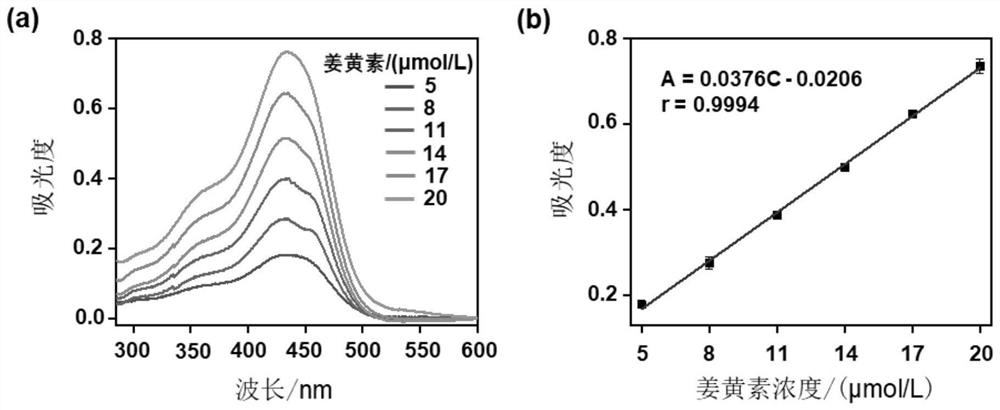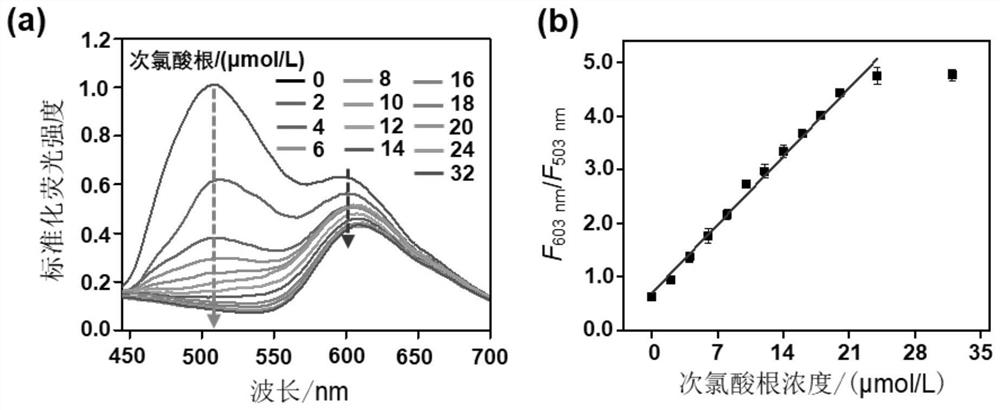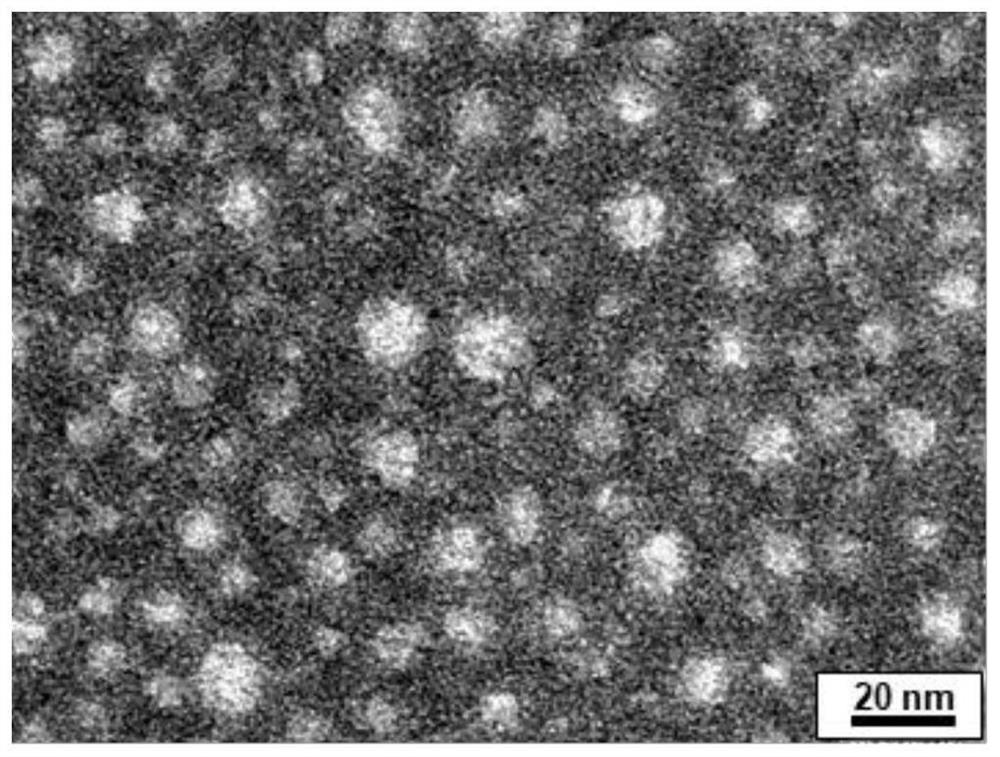Detection method of hypochlorite ions
A technology of hypochlorite and detection method, applied in the field of detection, can solve problems such as uneven distribution of probes, lack of internal reference, etc., achieve the effects of wide application range, reduce interference of irrelevant factors, and improve detection sensitivity and accuracy
- Summary
- Abstract
- Description
- Claims
- Application Information
AI Technical Summary
Problems solved by technology
Method used
Image
Examples
Embodiment 1
[0035] Embodiment 1: a kind of detection method of hypochlorite ion
[0036] A method for detecting hypochlorite ions comprises the following technical steps.
[0037] (1) Determination of curcumin standard curve
[0038] The curcumin powder used was purchased from Aladdin Reagent (Shanghai) Co., Ltd., with a purity greater than 98%.
[0039] Step 1: Weigh the curcumin powder and place it in a 1.5mL PE tube, add dimethyl sulfoxide solution to prepare a curcumin solution with a concentration of 1mmol / L, ready for use.
[0040] Step 2: Take six 1.5mL PE tubes and number them 1-6. Pipette 1.0 μL, 1.6 μL, 2.2 μL, 2.8 μL, 3.4 μL, and 4.0 μL of curcumin solutions with a concentration of 1 mmol / L into tubes 1-6 in sequence, and then add 199.0 μL, 198.4 μL, 197.8 μL, 197.2 μL, 196.6 μL, 196.0 μL dimethyl sulfoxide-deionized water mixed solution (V 二甲基亚砜 / V 水 =1 / 4), mix thoroughly. Then pipette into the cuvette, measure the ultraviolet absorption A1, A2, A3, A4, A5, A6, do three ...
Embodiment 2
[0076] Embodiment 2: a kind of detection method of hypochlorite ion
[0077] The difference from Example 1 is that the "lake water" was taken from Hefei Emerald Lake on January 10, 2022, and the water temperature measured during the experiment was 25°C.
[0078] Take a certain volume of lake water and filter it with a 0.22 μm pore size filter to remove impurities and set it aside. Pipette 7.0μmol / L[Ru(bpy) 3 ] 2+ Put @CCM-NPs in a 1.5mL PE tube, then add lake water to make up to 200mL. After reacting for 154.0 seconds at 25°C, move it to a cuvette, measure the fluorescence emission spectrum of the sample under 365nm excitation with a fluorescence spectrophotometer, and record the fluorescence emission spectrum intensity F at 503nm and 603nm 503nm , F 603nm . Measured F 603nm / F 503nm =0.74087, substitute it into the above regression equation F 603nm / F 503nm =0.18166C ClO - +0.70179, the concentration of hypochlorite is 0.2151 μmol / L.
Embodiment 3
[0079] Embodiment 3: A kind of detection method of hypochlorite ion
[0080] A detection method for hypochlorite ions, comprising the following steps:
[0081] Step 1: measure curcumin standard curve;
[0082] Step 2: Synthetic curcumin liposome;
[0083] Step 3: Assemble the dual emission ratiometric fluorescent probe [Ru(bpy) 3 ] 2+ @CCM-NPs;
[0084] Step 4: Construct the regression equation of hypochlorite ion fluorescence detection;
[0085] Step 5: Pretreatment of samples containing hypochlorite ions;
[0086] The sample to be tested is tap water, liquid food or environmental water; tap water and liquid food are tested directly; the environmental water is filtered with a filter paper or membrane with a pore size of 0.22 μm before testing, and the filtrate is collected for testing;
[0087] Step 6: Sample detection and hypochlorite ion concentration calculation;
[0088] First pipette the dual emission ratiometric fluorescent probe [Ru(bpy) 3 ] 2+ Put the @CCM-NP...
PUM
 Login to View More
Login to View More Abstract
Description
Claims
Application Information
 Login to View More
Login to View More - R&D
- Intellectual Property
- Life Sciences
- Materials
- Tech Scout
- Unparalleled Data Quality
- Higher Quality Content
- 60% Fewer Hallucinations
Browse by: Latest US Patents, China's latest patents, Technical Efficacy Thesaurus, Application Domain, Technology Topic, Popular Technical Reports.
© 2025 PatSnap. All rights reserved.Legal|Privacy policy|Modern Slavery Act Transparency Statement|Sitemap|About US| Contact US: help@patsnap.com



